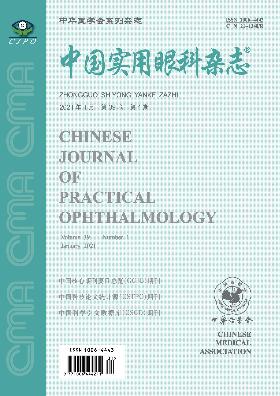增生性糖尿病视网膜病变玻璃体视网膜手术后晚期玻璃体出血的临床分析
引用次数: 0
摘要
目的观察增殖性糖尿病视网膜病变(PDR)患者玻璃体切除术后晚期玻璃体出血(LVH)患者血管内皮生长因子(VEGF)的表达及LVH患者(74周)VEGF水平的变化。方法回顾性分析73例(82眼)PDR患者行玻璃体切除术的临床资料。玻璃体标本分别取自第一次玻璃体切除术和第二次玻璃体切除术的LVH眼。采用ELISA法检测玻璃体VEGF水平。根据PPV术后LVH的有无分为无LVH组和LVH组,以眼内异物损伤需要紧急眼内手术的患者为正常对照组。结果82只眼中有19只(23%)发生LVH, 5只(6%)需要第二次玻璃体切除术。PDR患者VEGF水平显著高于正常对照组(P <0.01), LVH组显著高于非LVH组(P <0.05), (P <0.01)。结论原发性玻璃体切除术后高眼内VEGF水平是PDR患者术后LVH发生的危险因素。眼内血管内皮生长因子的持续过量产生可能与术后LVH有关。关键词:VEGF;玻璃体切割;PDR;晚期玻璃体出血本文章由计算机程序翻译,如有差异,请以英文原文为准。
Clinical analyses of late vitreous hemorrhage after vitreoretinal surgery in proliferative diabeticretinopathy
Objective
To observe the expression of VEGF in the postoperative late vitreous hemorrhage (LVH) after vitrectomy for proliferative diabetic retinopathy (PDR) patients, and how VEGF level changes in patients with LVH (74 weeks) .
Methods
Seventy-three patients (82 eyes) with PDR who underwent vitrectomy were analyzed retrospectively. Vitreous samples were collected from eyes undergoing primary vitrectomy and from eyes with LVH undergoing second vitrectomy. Vitreous VEGF levels were measured using ELISA. According to the occurrence or absence of LVH after PPV, the patients were divided into the non LVH, LVH groups, and the patients with intraocular foreign body injuries who needed emergent intraocular surgeries were served as the normal control.
Results
LVH occurred in 19 (23%) of 82 eyes, and 5 eyes (6%) required second vitrectomy. VEGF level was significantly higher in PDR patients than that in normal control (P <0.01), was significantly higher in LVH than that in non LVH (P <0.05), (P <0.01).
Conclusions
In patients with PDR, high intraocular VEGF level after primary vitrectomy was identified as a risk factor of postoperative LVH. Persistent overproduction of intraocular VEGF may be associated with postoperative LVH.
Key words:
VEGF; Pars plana vitrectomy; PDR; Late vitreous hemorrhage
求助全文
通过发布文献求助,成功后即可免费获取论文全文。
去求助
来源期刊
自引率
0.00%
发文量
9101
期刊介绍:
China Practical Ophthalmology was founded in May 1983. It is supervised by the National Health Commission of the People's Republic of China, sponsored by the Chinese Medical Association and China Medical University, and publicly distributed at home and abroad. It is a national-level excellent core academic journal of comprehensive ophthalmology and a series of journals of the Chinese Medical Association.
China Practical Ophthalmology aims to guide and improve the theoretical level and actual clinical diagnosis and treatment ability of frontline ophthalmologists in my country. It is characterized by close integration with clinical practice, and timely publishes academic articles and scientific research results with high practical value to clinicians, so that readers can understand and use them, improve the theoretical level and diagnosis and treatment ability of ophthalmologists, help and support their innovative development, and is deeply welcomed and loved by ophthalmologists and readers.

 求助内容:
求助内容: 应助结果提醒方式:
应助结果提醒方式:


